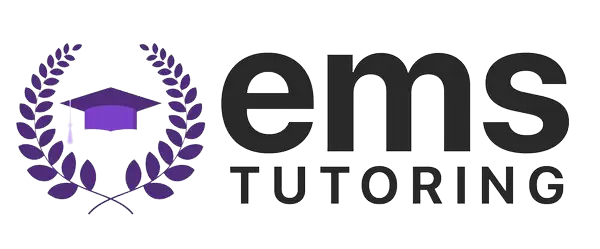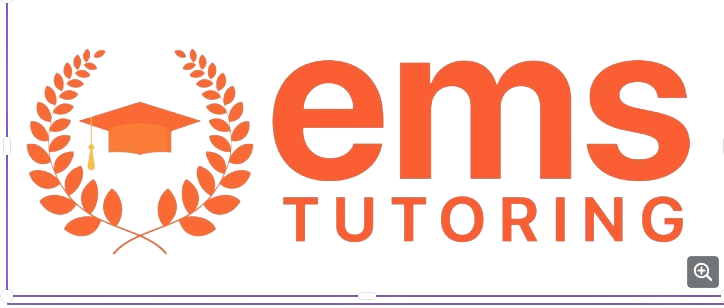Are you feeling overwhelmed by the upcoming GCSE Maths exam? Don’t worry, we’ve got you covered! In this article, we will explore various exam techniques and study strategies that will help you ace your maths exam. From tips on time management and exam preparation to valuable resources and practice questions, we will provide you with the tools you need to succeed. Whether you struggle with algebra, geometry, trigonometry, or any other mathematical concept, our goal is to boost your confidence and help you achieve tutoring success. So, let’s dive into the wonderful world of GCSE Maths and discover the key to unlocking your mathematical potential.
GCSE Maths
Algebra
Algebra is a fundamental branch of mathematics that deals with symbols and the rules for manipulating those symbols. It is a powerful tool used to solve a wide range of mathematical problems. Understanding basic algebraic concepts is essential for success in GCSE Maths.
Understanding basic algebraic concepts
In algebra, variables represent unknown values, and they are often denoted by letters such as x or y. Algebraic expressions consist of variables, constants, and mathematical operations like addition, subtraction, multiplication, and division. By manipulating these expressions, you can solve equations and inequalities to find the values of the unknown variables.
Solving linear equations
Linear equations are equations that involve a linear relationship between variables. They can be solved using various methods such as the balance method or the method of substitution. The goal is to isolate the variable on one side of the equation to determine its value. Solving linear equations is a fundamental skill that forms the basis for more complex algebraic problem-solving.
Manipulating algebraic expressions
Manipulating algebraic expressions involves simplifying and rearranging expressions using properties and rules of algebra. This can include combining like terms, factoring, expanding, or simplifying fractions. Being proficient in manipulating algebraic expressions allows you to simplify complex equations and expressions, making them easier to solve.
Solving quadratic equations
Quadratic equations are equations that involve a polynomial of degree two. These equations can be solved using various methods such as factoring, completing the square, or using the quadratic formula. Quadratic equations often represent real-world situations and can be used to model and solve problems in physics, engineering, and other disciplines.
Geometry
Geometry is the branch of mathematics that deals with the study of shapes, sizes, and properties of figures and spaces. It provides a framework for understanding and analyzing various mathematical concepts.
Understanding geometric shapes and properties
Geometry involves studying different types of shapes such as triangles, quadrilaterals, circles, and polygons. Each shape has unique properties, and understanding these properties is essential for solving geometric problems. Properties can include angles, side lengths, symmetry, and area.
Calculating angles in polygons
Polygons are closed figures with straight sides. Calculating angles in polygons is a crucial skill in geometry. The sum of the interior angles in a polygon depends on the number of sides it has. For example, the sum of the interior angles of a triangle is 180 degrees, while a quadrilateral has a sum of 360 degrees.
Using Pythagoras’ theorem
Pythagoras’ theorem is a fundamental concept in geometry that relates to right-angled triangles. It states that the square of the hypotenuse (the side opposite the right angle) is equal to the sum of the squares of the other two sides. This theorem is used to solve various problems involving the lengths of sides in right-angled triangles.
Applying trigonometric ratios
Trigonometry involves the study of relationships between the angles and sides of triangles. Trigonometric ratios, such as sine, cosine, and tangent, are used to calculate unknown side lengths or angles in triangles. These ratios have applications in various fields, including engineering, physics, and navigation.
Trigonometry
Trigonometry is a branch of mathematics that focuses on relationships between the angles and sides of triangles. It provides tools and techniques for solving problems involving angles, distances, and heights.
Defining trigonometric functions
Trigonometric functions, such as sine, cosine, and tangent, are mathematical functions that relate angles to the ratios of side lengths in a triangle. These functions are fundamental in trigonometry and have applications in various fields, including engineering, physics, and architecture.
Solving right-angled triangles
Trigonometry allows us to solve right-angled triangles by using trigonometric ratios and the Pythagorean theorem. By knowing the lengths of two sides or an angle and a side, we can determine the lengths of the remaining sides or angles.
Using trigonometric identities
Trigonometric identities are mathematical equations that establish relationships between trigonometric functions. They are useful for simplifying expressions, proving equations, and solving trigonometric equations. Understanding and using trigonometric identities are essential for mastering trigonometry.
Applying trigonometry in real-life scenarios
Trigonometry has numerous real-life applications. For example, it is used in navigation to calculate distances and angles, in architecture to design structures, in physics to analyze forces and motion, and in engineering to solve problems related to angles and lengths.
Statistics
Statistics is the branch of mathematics that deals with the collection, analysis, interpretation, presentation, and organization of data. It provides methods for summarizing and making inferences from data.
Understanding data representation
Data can be represented in various forms such as tables, graphs, and charts. Understanding how to read and interpret data representations is crucial for analyzing and drawing conclusions from data.
Calculating measures of central tendency
Measures of central tendency, such as mean, median, and mode, are used to describe the typical or central value of a dataset. Calculating these measures helps in summarizing data and understanding its distribution.
Interpreting and analyzing graphs and charts
Graphs and charts are visual representations of data that allow for a quick understanding of patterns and trends. Analyzing graphs and charts enables the identification of relationships, comparisons between different categories, and data interpretation.
Applying probability in statistics
Probability is the branch of mathematics that deals with the likelihood of events occurring. It is often used in statistics to analyze and interpret data. Understanding probability concepts and applying them to statistics allows for more accurate predictions and inferences.
Probability
Probability is the branch of mathematics that deals with the likelihood of events occurring. It provides tools for quantifying and analyzing uncertain events or outcomes.
Understanding probability concepts
Probability concepts include the concept of an event, sample space, and probability of an event occurring. These concepts form the foundation of probability theory and are essential for understanding and applying probability in various situations.
Calculating probabilities
Probability can be calculated by dividing the number of favorable outcomes by the total number of possible outcomes. This allows one to determine the likelihood of a specific event occurring.
Using probability in real-world situations
Probability has applications in many real-world situations, such as predicting weather conditions, assessing risks in insurance, making decisions based on uncertain outcomes, and analyzing data in various fields.
Understanding conditional probability
Conditional probability is the probability of an event occurring given that another event has already occurred. It involves considering additional information or conditions when calculating probabilities. Understanding conditional probability is crucial for more accurate predictions and decisions in probabilistic scenarios.
Revision Tips
Preparing for exams can be a daunting task, but with effective revision techniques and proper organization, you can excel in your GCSE Maths.
Creating a study schedule
Creating a study schedule helps you allocate time for each subject and topic. It allows for effective time management and ensures that you cover all the necessary material before the exam. Divide your study time into manageable chunks and include regular breaks to maintain focus and avoid burnout.
Organizing study materials
Organizing your study materials ensures easy access and efficient revision. Use folders or binders to keep your notes, textbooks, and past papers organized. Color-code your materials or use sticky tabs to categorize topics or subjects for quick retrieval.
Using effective revision techniques
Everyone has different learning styles, so it’s important to find revision techniques that work best for you. Some effective techniques include creating flashcards for key concepts, summarizing information in your own words, teaching the material to someone else, and practicing with past papers.
Seeking help from teachers or tutors
If you’re struggling with certain topics or concepts, don’t hesitate to seek help from your teachers or tutors. They can provide additional explanations, clarify doubts, and offer guidance on problem-solving strategies. Don’t be afraid to ask questions and request extra support when needed.
Exam Techniques
Understanding exam requirements and developing effective exam techniques are essential for performing well on GCSE Maths exams.
Understanding exam requirements and formats
Familiarize yourself with the exam requirements and formats. Understand the structure of the paper, the types of questions, and the marks allocated to each section. This will enable you to manage your time effectively and allocate it appropriately to each question.
Managing time during exams
Time management is crucial during exams. Practice solving past papers under timed conditions to develop a sense of timing. Allocate time to each question based on its marks and difficulty level. If you get stuck on a question, move on and come back to it later if time allows.
Approaching different question types
GCSE Maths exams can include various question types, such as multiple-choice, short-answer, and problem-solving questions. Understanding how to approach each question type is essential for maximizing your chances of obtaining full marks. Read the instructions carefully and answer the questions precisely.
Using appropriate strategies for problem-solving
Problem-solving skills are vital for GCSE Maths exams. Develop a systematic approach to solving problems by breaking them down into smaller steps. Use diagrams, equations, or logical reasoning to support your solutions. Practice applying different problem-solving strategies to become more confident in tackling complex questions.
Study Strategies
finding effective study strategies and techniques enhances your overall learning experience and helps you improve your understanding of GCSE Maths concepts.
Finding a study method that suits you
Experiment with different study methods and discover what works best for you. Some popular study methods include visual learning (using diagrams and images), auditory learning (listening to explanations or recording yourself), kinesthetic learning (engaging in hands-on activities), or a combination of these methods.
Using mnemonic devices and memory aids
Mnemonic devices and memory aids help you remember and recall information effortlessly. Create acronyms, rhymes, or visual associations to remember formulas, definitions, or important concepts. Using memory aids can make studying more enjoyable and help you retain information more effectively.
Engaging in active learning
Engage actively with the content by participating in discussions, solving problems, and practicing with real-world examples. Actively working with the material enhances understanding and retention. Summarize information in your own words, explain concepts to others, and apply the knowledge in different scenarios.
Testing yourself with practice questions
Regularly test yourself with practice questions to assess your understanding and identify areas of weakness. Refer to past papers, textbook exercises, or online resources for a variety of practice questions. Analyze your performance, seek feedback, and focus on the areas that require further improvement.
Curriculum Guide
Understanding the key topics covered in the GCSE Maths curriculum is essential for effective learning and revision.
Understanding the key topics in the GCSE Maths curriculum
The GCSE Maths curriculum covers a broad range of topics, including algebra, geometry, statistics, probability, and trigonometry. Familiarize yourself with the content and identify the key topics within each category. This will allow you to prioritize your study and ensure comprehensive coverage of the curriculum.
Prioritizing important concepts
Some concepts are more important than others in the GCSE Maths curriculum. Identify the key concepts that are likely to be heavily tested in exams. Focus on understanding and mastering these concepts before moving on to less critical topics. This will ensure a solid foundation for tackling more challenging questions.
Identifying areas of weakness for further improvement
Regularly assess your understanding of various topics and identify areas of weakness. By recognizing your weaknesses, you can allocate more time and effort to improve in those specific areas. Seek additional resources or help from teachers or tutors to address these weaknesses effectively.
Monitoring progress
Regularly monitor your progress by reviewing your performance in quizzes, practice exams, and other assessments. Keep track of any improvements or areas that still need more work. Reflect on your study strategies and make necessary adjustments to optimize your learning and revision.
Educational Technology
Educational technology plays a significant role in modern education. Incorporating technology into your GCSE Maths learning can enhance your understanding and make the learning process more engaging.
Exploring educational apps and software for maths learning
There are numerous educational apps and software specifically designed to support maths learning. Explore these resources to find interactive lessons, practice exercises, and instant feedback. These tools can provide a dynamic learning experience and offer additional support in areas where you need it most.
Utilizing interactive multimedia resources
Interactive multimedia resources, such as videos, animations, and simulations, can supplement your GCSE Maths learning. They provide visual and auditory representations of mathematical concepts, making them more accessible and engaging. Seek out high-quality multimedia resources that align with the GCSE Maths curriculum.
Engaging in virtual learning platforms
Virtual learning platforms offer opportunities for collaborative learning, interaction with peers and teachers, and access to a wide range of resources. Participate in online forums or discussion boards related to GCSE Maths to exchange ideas, ask questions, and gain insights from others. Virtual learning platforms provide flexibility and convenience for studying.
Keeping up with technological advancements in maths education
Technology in education is constantly evolving. Stay updated with the latest technological advancements in maths education. This includes being aware of emerging educational tools, software updates, and online platforms. Embracing technological advancements allows you to leverage the benefits of new resources and approaches to enhance your learning experience.
In conclusion, GCSE Maths encompasses various branches of mathematics, including algebra, geometry, trigonometry, statistics, and probability. Understanding the fundamental concepts within each branch is crucial for success in exams. Implementing effective study strategies, mastering exam techniques, and utilizing educational technology can enhance your learning experience and lead to better performance. Remember to prioritize important topics, seek help when needed, and consistently revise and practice to achieve your full potential in GCSE Maths.








